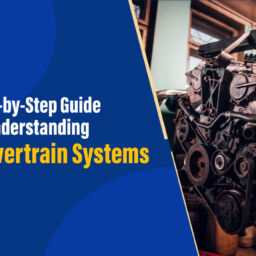
Mechanical engineering has advanced significantly from drawing boards, sketching, and manual calculation. Since technological advancements are growing rapidly CAD software has seen revolutions in designing, analyzing, and manufacturing mechanical systems.
Industries also demand technically skilled professionals in designing or prototyping. Thus, the top engineering colleges are incorporating today’s technological advancements in their syllabus and practical guidance for mechanical engineering students. However, in this article, you may get to know the evolution of CAD software reshaping the industry and applications that engineers need to know.
Evolution of CAD software:
- Pencil, paper to digital: Pencils, paper, and drafting tools were the tools mechanical engineers used to create detailed technical drawings and plans for a variety of assignments. The process was prone to errors while also being time-consuming. The development of CAD software allowed engineers to design with efficiency and accuracy.
- Digital prototyping is possible with CAD software: The ability to create digital prototypes is one of CAD’s biggest advantages. In the past, for testing and improving their designs, engineers had to construct physical prototypes. It required a lot of time and money along with cash. Engineers can save time and resources by using computer-aided design to model and evaluate their designs in a virtual setting.
- CAD provides effective collaboration and communication: Moreover, CAD has helped mechanical engineering teams collaborate better. Engineers can collaborate without difficulty, even when they are located in different physical locations, due to digital designs that are simple to share and edit. More creative and sophisticated designs have resulted from this improved communication.
- CAD software facilitates the manufacturing process: Manufacturing efficiency is vital, and computer-aided design (CAD) has greatly contributed to this area of mechanical engineering. Manufacturers can cut waste and errors by using CAD models to generate exact manufacturing instructions. Streamlining has proven particularly advantageous in industries that require accuracy and mass production.
- CAD supports sustainability and environmental impact: Concern over sustainability in engineering is rising. Engineers can maximize designs for sustainability and efficiency with the help of CAD. For instance, engineers can design automobiles that are more environmentally friendly by modeling airflow in the vehicle’s design. This reduces the vehicle’s impact on the environment.
What are the applications of CAD software in mechanical engineering?
For mechanical engineers, CAD software transforms the way of design and development of products, making it easier to create complex designs that are more accurate and efficient than before. Here are a few applications of CAD software.
- Designing the product: 3D models of mechanical parts, structures, and finished goods are produced using CAD software. Engineers can create intricate geometries, run simulations and analyses, and virtually test their creations before manufacturing.
- Detailing and drafting: This software makes it easier for engineers to create technical illustrations and 2D drawings of mechanical components and systems. All the dimensions, tolerances, and annotations needed for assembly and manufacturing are included in these drawings.
- Finite Element Analysis (FEA): It is a computerized method for assessing the stress, strain, and stretching of mechanical components under varied loading scenarios, and is carried out by CAD software. Engineers can design mechanical parts and assemblies for maximum strength and durability by using this feature.
- Prototyping: 3D printing and other rapid prototyping methods can be used to prototype objects created with CAD software quickly. This makes it possible for engineers to test their designs and quickly and affordably make changes.
- CNC machining: CNC (Computer Numerical Control) machines are programmed to manufacture mechanical parts with high levels of accuracy and precision using 3-D models created with CAD software.
- Product lifecycle management: Product lifecycle management, from initial design to production and beyond, is handled by CAD software. This includes keeping track of modifications to the design, organizing engineering data, and making sure that all product documentation is correct and up to date.
Future of CAD software:
CAD software advances by making it possible to finish design projects faster and with higher quality. Also, it improves documentation and communication in mechanical engineering projects.
Design software, simulation or analysis software, and manufacturing software are the three categories into which CAD software can be divided to explain it.
Since CAD software for mechanical engineering offers newer and more advanced features to improve design speed, quality, and efficiency, the future of this technology is exciting. For the foreseeable future, CAD software will thus remain a vital tool for mechanical engineers.
Conclusion:
Engineers can benefit from these computer-aided design software. This helps mechanical engineers create solid designs, save time, and speed up the design process that can meet the client’s requirements and reduce errors and rework. Therefore, mechanical engineers need to learn the technical concepts, and design solutions that help in creating the mechanical engineering design process. Thus, CAD software continues to play an important role and thus the best mechanical engineering colleges in Tamil Nadu incorporate this software in their syllabus.






